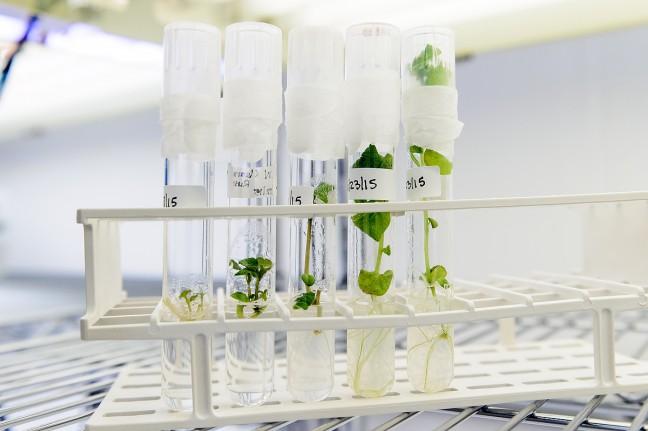Two University of Wisconsin students are working toward using natural substances to create eco-friendly that can help scrub cancer-causing gases from water and air.
Third-year Ph.D. student Yang Liao and second-year master’s student Shu-Ching Yang won a $10,196 grant to use cellulose and biomass to create special gels that will absorb gases like formaldehyde from air and water to clean it, Liao said.
“This project is about using naturally occurring polymers and other natural substances to create gels which would help purify water and air,” Liao said.
Under the guidance of Xuejun Pan, an associate professor for bioenergy and bioproducts, Liao and Yang have begun working on their proposal, which won a UW Advanced Materials Industrial Consortium competition, Yang said. The consortium aims to connect students with their industries of interest and expand their research.
Formaldehyde gases are commonly found in newly furnished homes and in most adhesive substances like wood glue. Liao said short-term exposure to the gas can cause respiratory problems while long-term exposure can lead to cancer.
“Almost everything you use — like indoor decoration materials and wood materials — has formaldehyde,” Liao said.
The U.S. Environmental Protection Agency and World Health Organization have labeled formaldehyde as a “pollutant and harmful carcinogen,” Liao said. According to the Centers for Disease Control and Prevention’s report, people should not be exposed to more than 1 part per million of formaldehyde within eight hours.
Yang said heavy metal ions like lead, copper, arsenic and cadmium, among others, are also commonly found in water sources. These can be poisonous if ingested and can affect marine life if they leak into larger water sources like oceans. As such, it is important to have as little of these gases and metals in the air and water as possible.
Yang said is working on a “hydrogel,” which would remove these metals from the water. Liao is working on the “aerogel” part of the project, which would remove formaldehyde gases from the air, especially in indoor areas.
There have been other technologies for removing formaldehyde from the air, but they are not made specifically for removing the gas, and they target other gases like carbon dioxide, Liao said. This makes them less effective, and it is easy to reverse the effect these technologies have, which is not helpful in the long run.
Moreover, many of these existing technologies are comprised of synthetic polymers, which can be pollutants themselves, Liao said. Synthetic polymers are derived from petroleum, which is expensive to extract and even more expensive and time-consuming to modify.
Unlike synthetic polymers, cellulose and biomass are naturally occurring polymers, Liao said. Biomass is organic matter that can be used as fuel. These materials are found in abundance and are much easier to work with compared to synthetic polymers.
Yang said she and Liao use cellulose, biomass, chitosan and lithium bromide solution or LiBr to make their gels.
“The materials used are also eco-friendly, renewable and cheap,” Liao said.
Cellulose gives the gels their structural integrity because it is hard to dissolve or break, Liao said. It is found in plants and can be obtained from biomass sources like sawdust. LiBr is a salt-like sodium chloride or table salt and is used in high concentrations as a solvent to dissolve cellulose, Liao said.
Chitosan is most commonly found in crab and shrimp shells, Liao said. This is what gives the gel the ability adsorb heavy metal ions or formaldehyde. But chitosan has to be combined with cellulose to purify.
Yang said the gels are created by first preparing the LiBr solution, after which the cellulose and chitosan are mixed in their powder forms. The solution is heated to 110-140 degrees Fahrenheit and then cooled down.
Liao said the cooling process leads to “gelation” that creates the gel-like texture of substance. The gel is then soaked in water, which allows the LiBr to switch with the water and make a hydrogel.
A few more steps are performed to obtain the aerogel. The water is replaced with ethanol and then replaced with butanol. It is freeze-dried to create a more porous, sponge-like gel called the aerogel, Liao said.
Yang said the gels have a variety of real-world applications. They can be used in mining and agricultural industries as well as in more domestic applications as simple as water filtration systems. She said aerogel could also be used to curb automobile emissions, which contribute to global warming.
Currently, Yang and Liao are working on lowering the costs of producing these gels and making the chemical process more efficient. They hope to make the gels more useful and possibly reusable in the future.
“There’s still a lot we can do, and using these materials is just the beginning, and we have a long way to go,” Yang said.
Kruti Yellapantula contributed to reporting this article.


